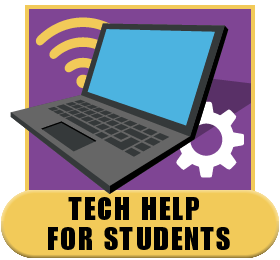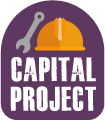Frequently Asked Questions
Q: How did the district get into its current budget situation?
A: In the immediate aftermath of the Great Recession of 2008, the Johnstown Board of Education adopted school budget proposals that called for little or no tax levy increases, choosing instead to use the district’s savings — fund balance and reserves — to make up for any budget shortfalls.
Only recently did the district begin working with independent financial advisers to create long-term budget projections that showed how quickly that practice is depleting Johnstown’s savings. The current Board of Education and administration continue to work with the financial advisers to develop plans for long-term cost savings and increased revenue to end the district’s reliance on its savings and put it back on solid financial footing.
Q: What has been done to ensure that funds have not been mismanaged?
A: The school district’s finances are audited twice every year: one is an internal audit, and the other is an external audit. During the past 10 years, Johnstown has received the highest possible opinion (“unmodified”) in its audits.
In addition to these twice annual audits, the New York State Comptroller’s Office conducts an audit of the school district approximately once every six years. The most recent comptroller’s audit was completed in 2019, and it also gave the district its highest possible opinion (“no recommendations”).
In addition to these audits, there are multiple checks and balances built in to daily business office operations, including segregation of duties, to ensure that Johnstown’s finances are managed appropriately.
Q: Why can’t the school district get more money from New York state?
A: The formula used to determine state aid for New York state’s public schools takes into account property values, gross income, enrollment and student poverty levels in the district. A 10-year (2008-2018) analysis of these factors reveals the following:
- Actual value of property in the Greater Johnstown School District has increased 42%; the increase was 32% before the 2016 City of Johnstown reassessment.
- Adjusted gross income has risen 19%.
- Student poverty has risen 15%.
- Enrollment has decreased by approximately 300 students.
Although student poverty has grown, Johnstown’s state aid will not increase because the other factors would ordinarily cause state aid to decrease. However, Johnstown is in a “hold harmless” situation, meaning the state has not decreased the district’s state aid. It is impossible to know how long the state will maintain Johnstown’s “hold harmless” status; without it, the district stands to lose approximately $980,000 in state aid.
Q: Why is the school district proposing double-digit tax levy increases?
A: For years, Johnstown school boards have presented budget proposals that called for little or no tax levy increases. State aid has remained relatively flat. Meanwhile, costs have risen steadily. To make up the difference, the district has been using its fund balance (reserves) to pay for programs.
Johnstown’s tax levy and spending are low compared with our neighbors and similar districts in New York:
- In 2018, Johnstown’s total budget was less than the budgets of 78% of similarly sized school districts in New York state.
- Johnstown’s tax levy per student spending is lower than 90% of all school districts in New York state.
- Johnstown’s tax levy per student is the lowest in the HFM BOCES region.
- In 2018, Johnstown’s true-value tax rate was $14.60 per $1,000 of assessed value. The average true-value tax rate for neighboring districts was $18.94 per $1,000 of assessed value.
- In 2018, Johnstown’s tax levy supported 26% of the district’s total budget. In neighboring districts, on average, the tax levy supports 37% of the total budget.
Q: If enrollment is declining, why does Johnstown need to increase the tax levy?
A: Johnstown’s total enrollment has decreased by about 300 students over the past 10 years. As enrollment has declined, the district has “right-sized” its staff to maintain average class sizes of 20-22 students in elementary schools and 22-25 students at Knox Junior High and Johnstown High School. This “right-sizing” has been achieved through layoffs as well as attrition (not hiring someone to fill a position that was vacated through retirement or resignation).
In spite of declining enrollment, Johnstown’s budget continues to increase because of unfunded state mandates and rising costs associated with educating students with special needs. The district’s past over-reliance on its savings to pay for core programs means that Johnstown’s tax levy has not kept pace with rising costs.
Q: What has the district done to reduce the budget and control costs?
A: Leaders of the Greater Johnstown School District have been working to address the district’s long-term budget gap for years. For example, when developing the 2018-19 budget, leaders cut more than $1.1 million by:
- Eliminating or reducing 13 positions, including teachers, clerical workers, building support staff and administrators
- Eliminating transportation for pre-K and field trips
- Reducing purchases of non-essential equipment
- Cutting extracurricular and sports programs with low participation
- Consolidating some sports teams (e.g., freshman with JV, modified B with A)
- Merging some sports teams with other districts
- Reducing supply budgets by 30 percent
- Limiting overtime hours
In 2009, Johnstown closed Jansen Avenue Elementary School as a cost-saving measure. Since 2011, Johnstown has made reductions in the areas of Spanish, French, art, health, family and consumer sciences, technology and general electives, including eliminating six teaching positions in 2016.
Q: What options is the district considering to reduce spending in the future?
A: District leaders are continuing to explore long-term cost-saving measures. A long-range planning committee is working with consultants to consider such options as closing another elementary school.
District leaders have also explored the idea of a merger with a neighboring district; however, a merger would require a significant increase to Johnstown’s current tax rate to bring it closer to the level of another district. These options are not viable in the short-term and would likely take years before any savings could be realized.
Q: Why can’t the district make additional cuts to balance the budget?
A: Johnstown’s current gap between revenues and expenditures is $4.3 million. It is not possible to close that gap through reductions without eliminating most non-mandated programs, including athletics, extracurricular activities, art, music, academic support services, high school electives, and kindergarten.
Q: Does Johnstown spend too much on its employees?
A: Johnstown’s teacher salary schedule is in the bottom 20% of all school districts in the 15-district HFM BOCES region. The salary schedule determines the pay teachers receive according to their years of service in the district.
In February, the district and the Johnstown Teachers’ Association (JTA) finalized a new contract that will freeze the salary schedule for most JTA members for two years and offer modest pay increases for the final years of the contract, which expires June 2021.
Under the contract, the district will save $180,000 in salaries and benefits during the 2018-19 school year, compared with the previous school year. The district is expected to save an additional $220,000 in the 2019-20 school year as a result of the new contract.
On average, Johnstown’s administrators, principals and directors earn $7,500 less per year than their peers in other HFM BOCES districts.
Health benefits for Johnstown employees accounts for 18% of the district’s entire budget. This percentage is comparable to other HFM BOCES school districts.
Q: Does Johnstown have too many administrators?
A: New York state mandates many administrative positions in public school districts, including a superintendent for the district and a principal for each school.
While most people would agree that teachers are the key employees in a school system, they cannot do their jobs alone. Administrators and support staff oversee the day-to-day operations of the schools, ensure compliance with state and federal mandates and requirements, arrange for staff professional development, manage employees, pay bills, respond to requests from the public, and much more. Because administrators and support staff do these things, teachers can concentrate on the important work of helping students learn.
Compared with other school districts in Johnstown’s immediate vicinity — Amsterdam, Gloversville and Broadalbin-Perth — Johnstown has the same or fewer number of administrators. For example, while Broadalbin-Perth employs a full-time athletics director, Johnstown’s athletics director is part-time.
Q: What effect has the recent capital project had on the district’s budget situation?
A: The capital project that was completed this year was approved by voters in December 2014. Since that time, Johnstown’s state reimbursement rate for building projects decreased by 5 percentage points as a result of district home values increasing. In addition, interest rates for borrowing have risen beyond the original estimates made in 2014. The local share of Johnstown’s capital project is up $600,000 from original projections; this difference is included in the proposed 2019-20 budget.
That being said, the final cost of the capital project ended up being less than the total amount voters approved. Approximately 96% of the capital project qualifies for reimbursement from the state. This funding is completely separate from the money used to pay for regular instruction — and, in fact, cannot be used for other purposes, such as to pay for teachers or supplies. Funding for the capital project can only be used to pay for the capital project.
Q: How much would my tax bill increase if the tax levy increases 14.6%?
A: Under an approved budget with a 14.6% tax levy increase, a district taxpayer could expect to see their school tax bill increase approximately:
- Johnstown (City)
- $50,000 property assessment – $109 OR $9/month
- $75,000 property assessment – $164 OR $14/month
- $100,000 property assessment – $219 OR $18/month
- Johnstown (Town)
- $50,000 property assessment – $157 OR $13/month
- $75,000 property assessment – $235 OR $20/month
- $100,000 property assessment – $313 OR $26/month
- Ephratah
- $50,000 property assessment – $152 OR $13/month
- $75,000 property assessment – $228 OR $19/month
- $100,000 property assessment – $304 OR $25/month
- Palatine
- $50,000 property assessment – $191 OR $16/month
- $75,000 property assessment – $286 OR $24/month
- $100,000 property assessment – $382 OR $32/month
- Gloversville (City)
- $50,000 property assessment – $105 OR $9/month
- $75,000 property assessment – $157 OR $13/month
- $100,000 property assessment – $210 OR $18/month
Note, the average assessment in the Greater Johnstown School District is $75,000. The provided estimates do not take into consideration STAR or other property tax exemptions. Visit the New York State Department of Taxation and Finance’s website to learn more about Basic STAR, Enhanced STAR and the STAR credit program.
School districts do not determine individual tax bills. GJSD is providing this information in an effort to be as transparent as possible and as a service to property owners in the community. Estimates are based on current assessments and equalization rates. Actual tax rates are set in August.
Q: What would happen if the proposed budget is voted down?
If the revised budget does not gain the approval of a simple majority of voters on June 18, the Board of Education must adopt a contingent budget. Under the property tax cap law, a school district that adopts a contingent budget cannot increase its tax levy over the previous year.
If Johnstown adopts a contingent budget, the district would prioritize at least half-day kindergarten and its core high school program for the 2019-20 school year. Additional eliminations would include elementary academic support programs and elementary art and music, including band and chorus. The community fundraising goal to preserve Johnstown’s interscholastic athletics program may be increased by up to $200,000.



